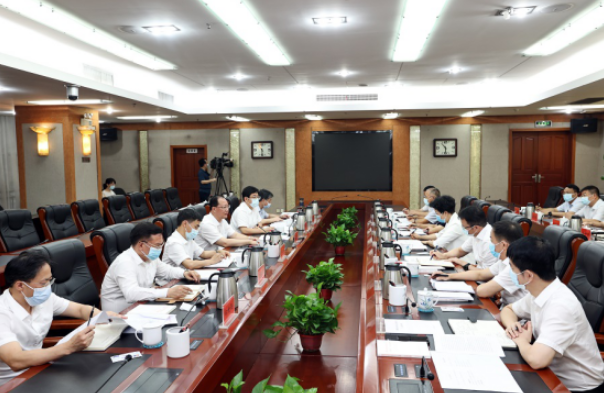BEIJING, March 18 (Xinhua) -- China's economy has seen a broad-based rebound between January and February as COVID-related disruptions have waned, adding to the growing body of evidence that the country is well-positioned to pursue sustained development. The rebound came with a much-expected recovery in consumption as pent-up demand drove up retail sales in various sectors including catering. Investment witnessed steady growth and the property sector also showed signs of recovery, according to data released earlier this week. The Jan-Feb statistics echoed Chinese Premier Li Qiang's optimism about the outlook of the country's economy. "The Chinese economy will brave the wind and waves and sail toward a brighter future and I have full confidence in this," Li said during his first press conference on Monday. China's economic progress is founded on its significant institutional strengths, particularly during a time when the global economy is encountering a range of challenges such as persistent inflation, geopolitical tensions, and unexpected disruptions in the U.S. banking system. "The improved Party leadership will provide a strategic capability unmatched by any other country for the formation and implementation of China's following policies on reform and opening-up," said Wang Wen, executive dean of Chongyang Institute for Financial Studies at the Renmin University of China. Wang added that the Chinese government is well-equipped in promoting major reforms and mobilizing resources nationwide after years of development of its governance system. A typical example in this regard is the formulation of medium and long-term development plans. In contrast to many other countries that base their policy agendas on election cycles, China has a tradition of mapping out "five-year plans," which are comprehensive policy blueprints for social and economic development formulated every five years. These blueprints can also cover a longer period such as the Outline of the 14th Five-Year Plan (2021-2025) for National Economic and Social Development and the Long-Range Objectives Through the Year 2035. By focusing on longer-term efforts, these forward-looking blueprints enable China to plan various development needs as a whole and better allocate resources, addressing new priorities in a changing world while maintaining policy continuity. In addition to China's capability in mapping out plans, the country boasts complete supply chains, a fast-growing consumer market of 1.4 billion people, and a super-size economy that contributes more than 30 percent of global growth. "The market potential is huge. The potential to expand demand is huge," Fu Linghui, spokesperson of the National Bureau of Statistics, told a press conference on Wednesday, adding that Chinese people's demand for a better life is a crucial pillar for future demand growth. Although China's per capita GDP has remained above 12,000 U.S. dollars for two consecutive years, there is still a big gap compared with developed countries. Admittedly, China's economic landscape is changing. The country's economic growth engine is experiencing a major shift from quantity-based demographic dividend and financial cycle to scientific and technological innovation, according to the China International Capital Corporation. The Chinese government does not shy away from existing challenges, such as an aging population and the need for more breakthroughs in sci-tech innovation. Rather, it faces up to difficulties and works on translating commitments into actions. The premier called for "in-depth analysis" to actively respond to the problems caused by changes in population. He also noted that rich human resources continue to be an outstanding advantage for China as the country's newly added labor surpasses 15 million per year and the new workforce completes an average of 14 years of education. Meanwhile, the country is racing against time to promote its sci-tech innovation. Notably, significant progress has been achieved in fields such as manned spaceflight, supercomputing, and airliner manufacturing. Last year, China moved up to the 11th spot in the Global Innovation Index 2022 released by the World Intellectual Property Organization, marking an impressive climb of 23 places from its 2012 ranking. Looking forward, analysts struck an upbeat note about the prospect of the Chinese economy. China's macroeconomic data is expected to improve further in March as the country will continue to boost consumption and investment, two major parts of domestic demand, and will also guide the real estate sector toward stability, said Wang Qing, an analyst with Golden Credit Rating. A new round of growth drivers are expected to be found in the process of spurring consumption, investment, urbanization, digital economy and green economy, among other areas, Wang Wen said, adding that China's economy is still poised for new growth. ■
Favorable conditions propelling China's economic revival toward brighter future
Editor:陈星晓
Source:Xinhua
Updated:2023-03-19 11:01:57
Source:Xinhua
Updated:2023-03-19 11:01:57
Special
Contact
Welcome to English Channel! Any suggestion, welcome.Tel:0731-82965627
lisl@rednet.cn
zhouqian@rednet.cn











